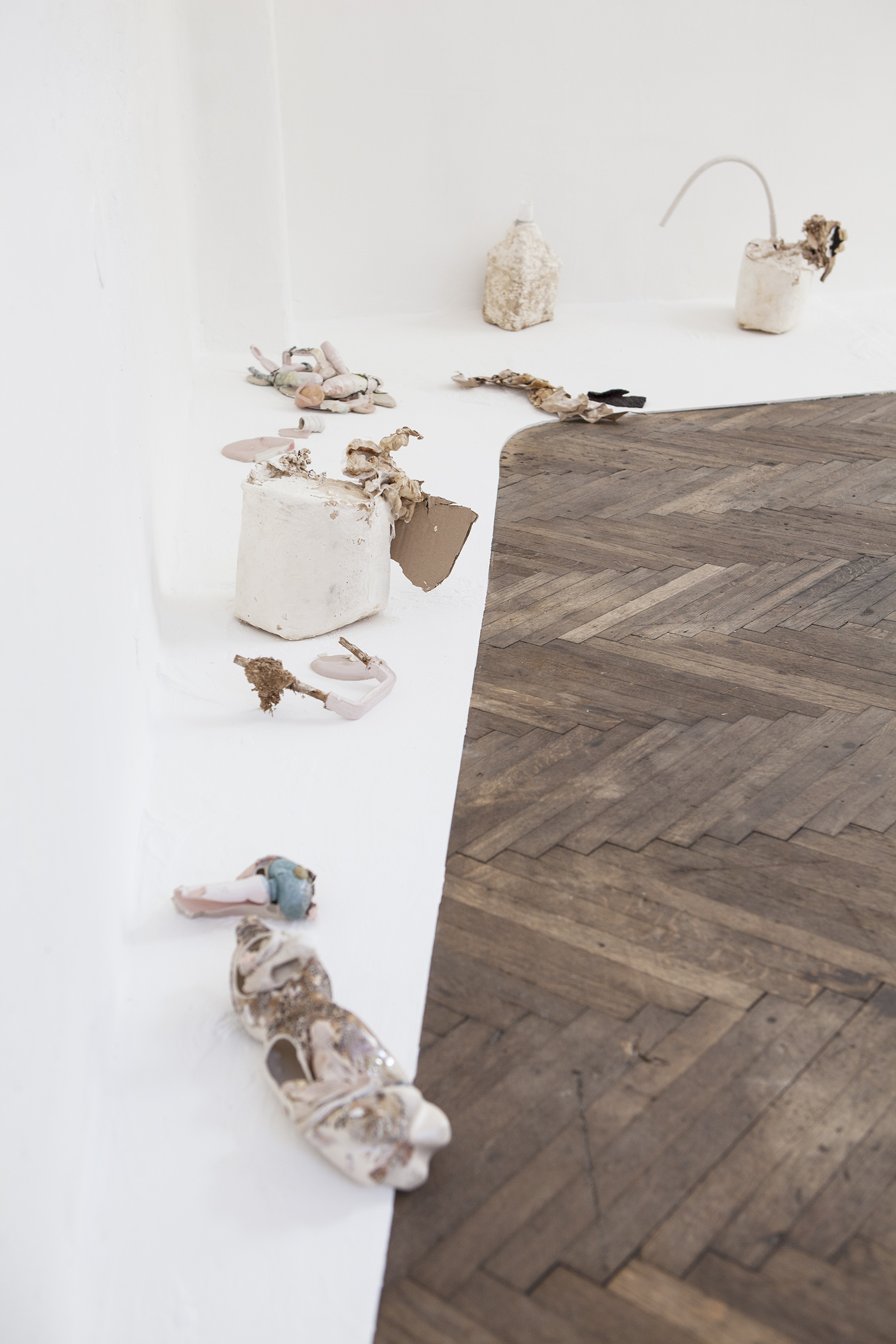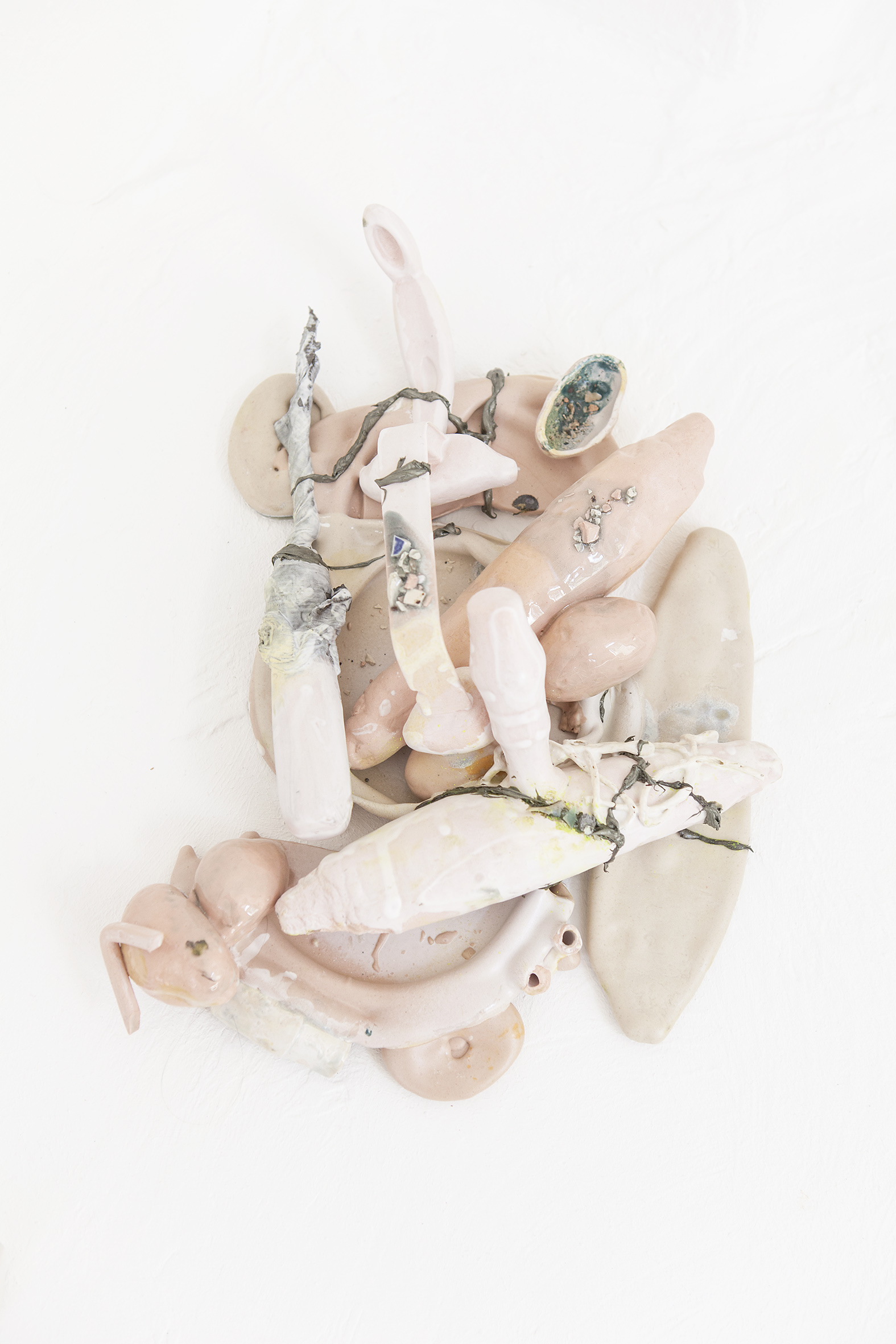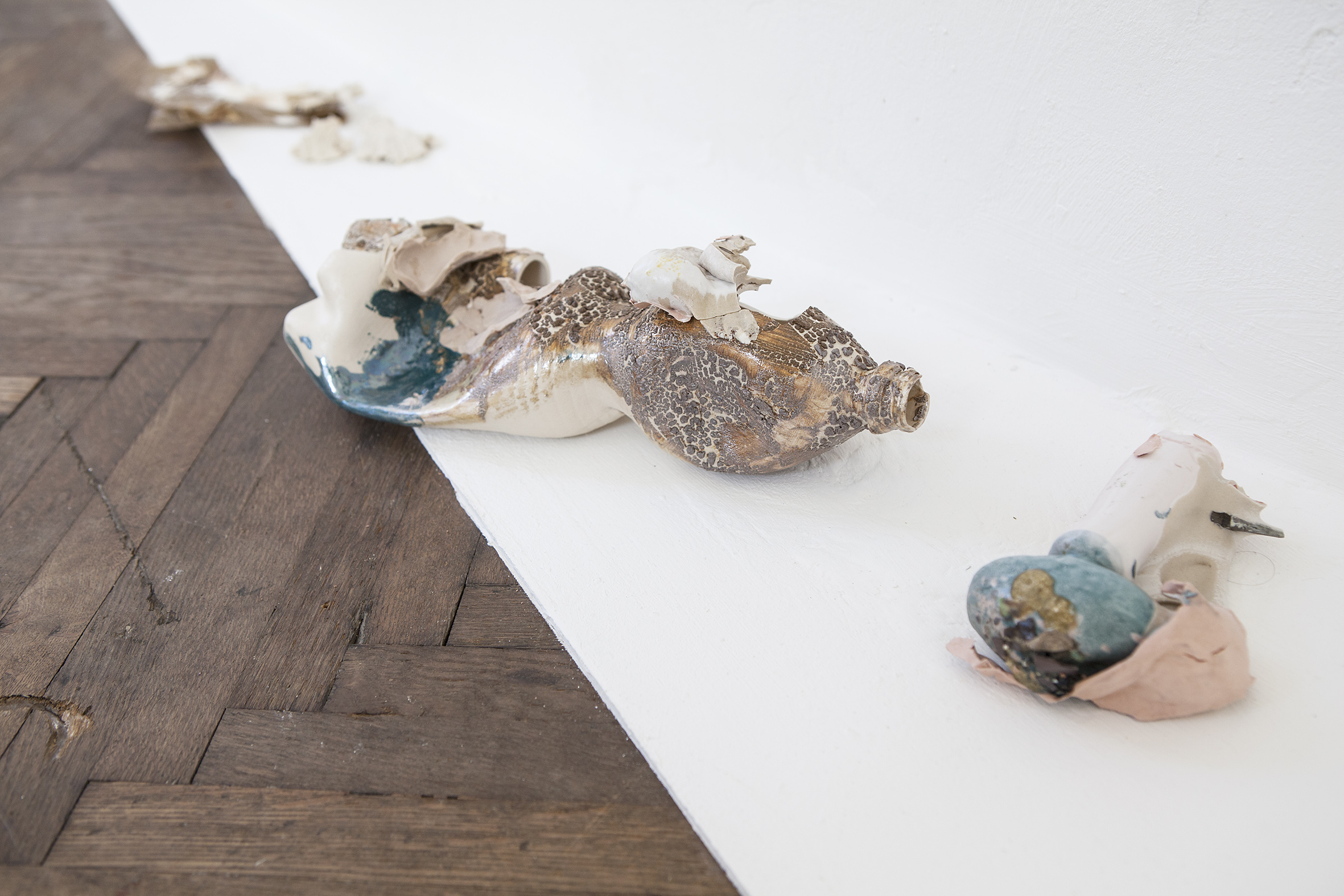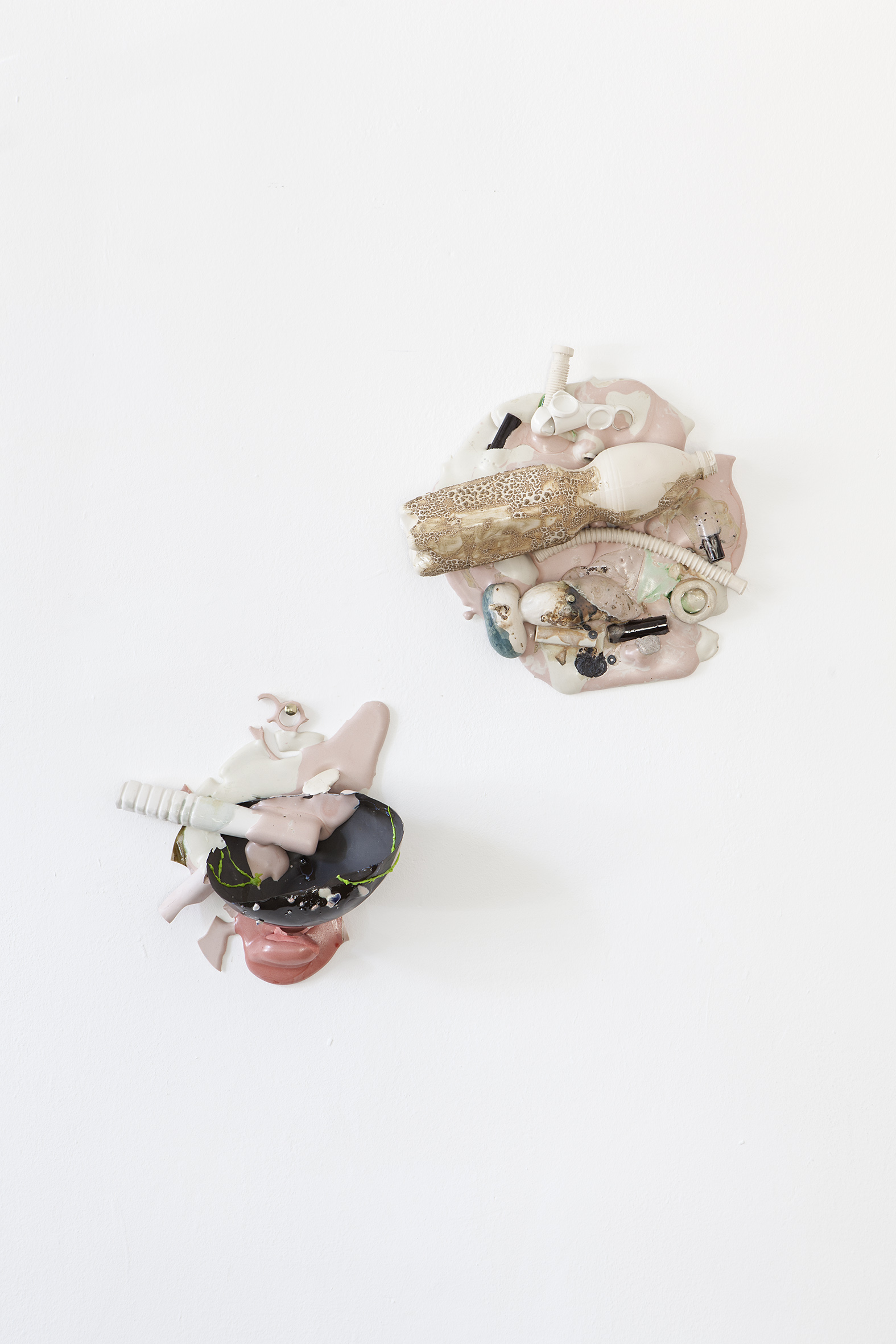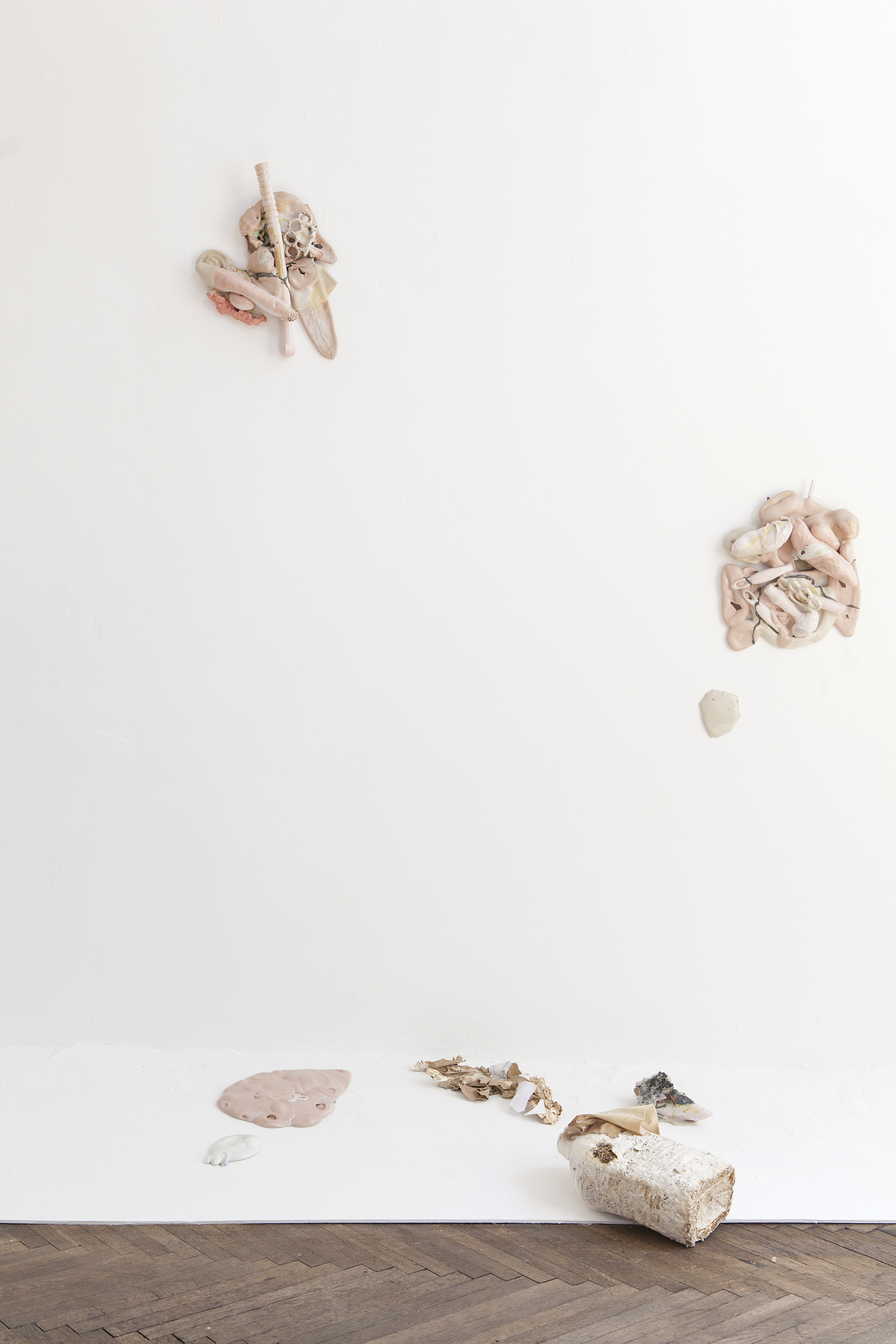Pyro Bodies is an installation with experimental ceramics and objects from dried mushroom mycelium.
The sculptural series Pyro Bodies has been inspired by findings of
pyroplastic pebbles on a beach in Milos, Greece, in 2019. Plastiglomerates or
pyroplastics are amalgams of natural debris and burnt plastic waste, of human
origin. Eroded by the elements pyroplastics get a stone like appearance, like
something geological.
This process of formation brings up questions about authorship and
agency. Agency cannot be reduced to single entities, no matter if human or
non-human, but it can be interpreted through networked interactions of human
and non-human actors and actants.
In analogy to the formation of pyroplastics stoneware, earthenware, glass,
stones or metal are melted together into material-semiotic composites.
The mycelium objects, preserved by heat after processes of nurturing and
growth, explore the same questions concerning authorship and agency and ask in
what way material-semiotic interactions influence our morality, ethics and
politics, since mycelium is seen as a sustainable substitute for plastics. Pyro
Bodies is also a speculation about what could possibly be found on future
beaches.
